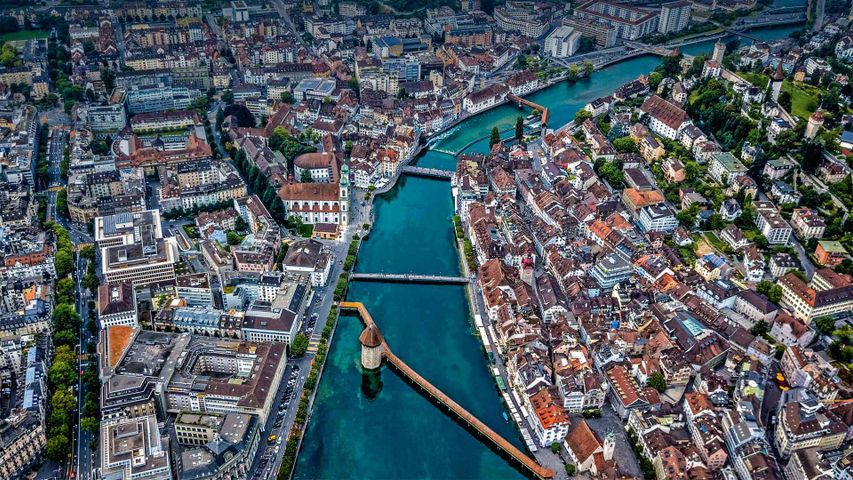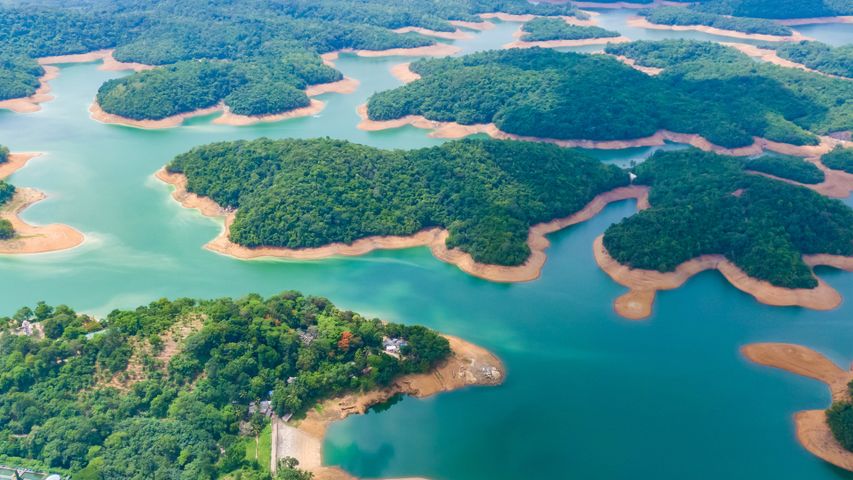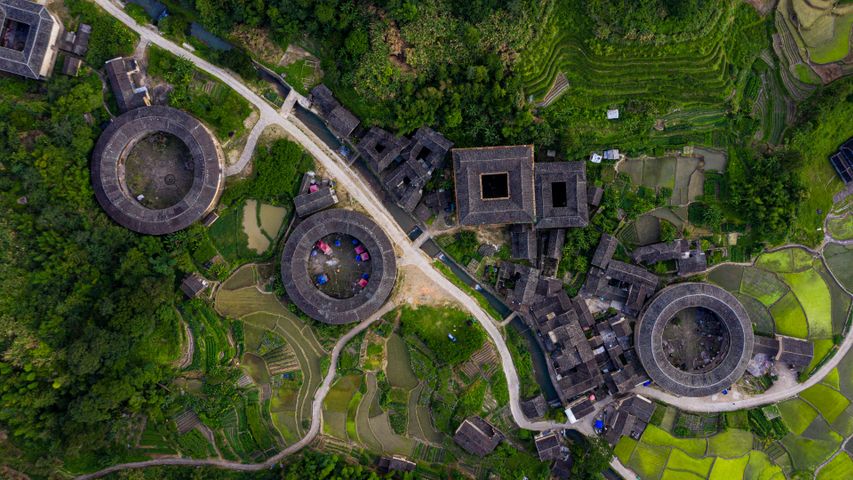Aerial view of Chapel Bridge over the river Reuss in Lucerne, Switzerland
© Neleman Initiative/Gallery Stoc
A Swiss city of bridges
We're in the heart of Switzerland looking down on the compact city of Lucerne, a charming waterfront setting along the shores of its namesake lake and the river Reuss. Surrounded by snow-capped mountains just out of frame, Lucerne lies in the Swiss-German-speaking part of central Switzerland and is divided into two parts linked by a series of bridges. The most famous of these bridges — the centerpiece and symbol of Lucerne — is the Kapellbrücke (Chapel Bridge), a covered wooden footbridge which you can see spanning diagonally across the Reuss in our photo. The building rising from the river alongside the footbridge is a medieval water tower, which has been used as a prison, torture chamber, local archive, and treasury.
Originally built in 1333 as part of Lucerne's fortifications, Chapel Bridge connected the old town on the right bank of the Reuss to the new town on the left, securing the city from attack via Lake Lucerne to the south. It is believed to be the oldest covered wooden bridge in Europe, as well as the world's oldest surviving truss bridge, although much of it had to be replaced after a devastating fire in 1993. Named for the nearby St. Peter's Chapel — the oldest original church structure in Lucerne — Chapel Bridge is picturesque in more ways than one. There are dozens of interior paintings on triangular panels underneath the bridge’s roof that date back to the 17th century. The paintings by local Catholic artist Hans Heinrich Wägmann depict historical events from the town, and despite the fire destroying most of the artwork, you can still admire some of the original paintings when crossing the river.
Related Images
Bing Today Images




 Vila Franca Islet, São Miguel Island, Azores, Portugal
Vila Franca Islet, São Miguel Island, Azores, Portugal
 Mona Vale Rockpool, Sydney, Australia
Mona Vale Rockpool, Sydney, Australia
 Tea garden at Yangjiatang Village, Songyang County, China
Tea garden at Yangjiatang Village, Songyang County, China
 Aerial view of Khao Sok National Park, Surat Thani, Thailand
Aerial view of Khao Sok National Park, Surat Thani, Thailand
 Great Blue Hole, Belize
Great Blue Hole, Belize
 Dam, lake and mountains in Kerala
Dam, lake and mountains in Kerala
 Peggy's Cove Lighthouse, Nova Scotia, Canada
Peggy's Cove Lighthouse, Nova Scotia, Canada
 Fujian Tulou complex of historical and cultural heritage buildings in Fujian province, China
Fujian Tulou complex of historical and cultural heritage buildings in Fujian province, China


